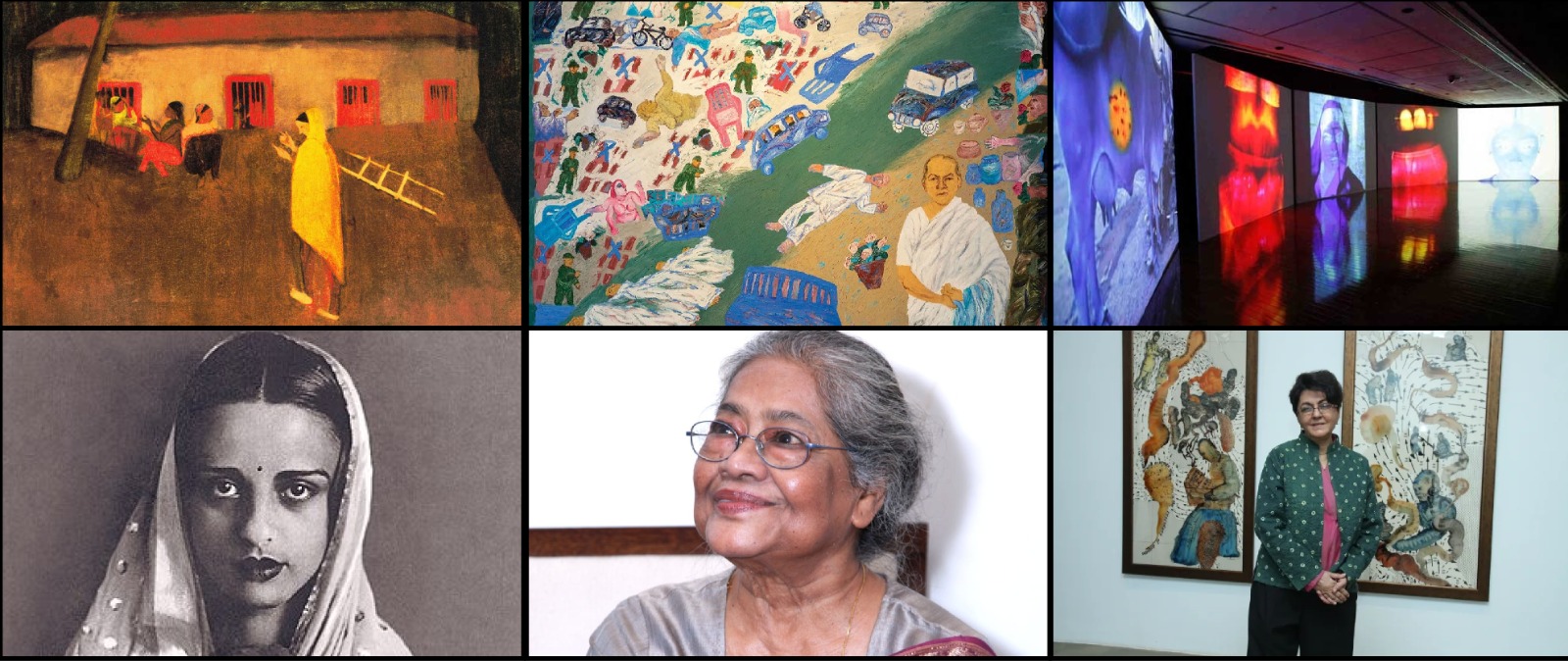Pioneering Women Artists Throughout History

India is famous for its art and culture, which are formed by many artists. In these artists, many women were also crucial but they are underappreciated. Throughout our history women have played an important role in shaping India’s art and culture, from artists to sculptors, women make a significant impact in all the fields. Their stories are not just another tale but an inspiration for many artists.
Amrita Sher-Gil :
Amrita Sher-Gil was one of the first modern women artists in India. She gives her work an exclusive blend of Eastern and Western styles by the fusion of European art and Indian traditions. She is known for vibrant, emotive portrayals of Indian women and rural life.
Her "Three Girls" (1935) and "Village Scene" (1938) stand out as iconic works, set strong on her bond with India's rural land and people. However, with such an abbreviated life span, having died when she was just 28 years old, Sher-Gil's legacy lives on for generations to come.
Arpita Singh :
Trained at Delhi College of Art, the modern Indian art fore-bearer, Arpita Singh's works are richly multi-layered with specific themes on femininity, mythology, and everyday life. The colors of the artist are vibrant as there seems to be a rather chaotic yet profoundly meaningful arrangement of symbols and figures.
She has dealt with the female experience in India in works like "My Mother" and "Durga" Her style, which is a mixture of personal, historical, and societal narratives, has made her a feminist icon in the Indian art world and inspired generations of women artists who question societal norms.
Nalini Malani
Nalini Malani has worked in two sectors visual media and the moving image and secondly ephemeral and in-situ works. Her works delve deep into issues of gender, conflict, and identity, often reflecting the complex socio-political landscape of modern India.
Nalini’s immersive installations and multimedia projects break away from traditional forms of art, pushing the boundaries of storytelling through visual and auditory experiences. Her works, such as "The Tables Have Turned" and "Mother India," challenge patriarchal narratives and give voice to marginalized communities.
Conclusion:
These women artists worked to enrich the Indian art landscape, but their work is also significantly influential in terms of changing the public's perception of gender and creativity. They are challenging patriarchal norms on the one hand and, through their complex human emotions, are responding to socio-political realities on the other.
Today, more Indian women artists exist than ever before within all ranges of visual and performing arts, beginning a line of work that their predecessors left behind for them. The work more powerfully speaks to the fact that art transcends social, cultural, and political boundaries and is an incredibly effective tool for self-expression and to effect change in society.



